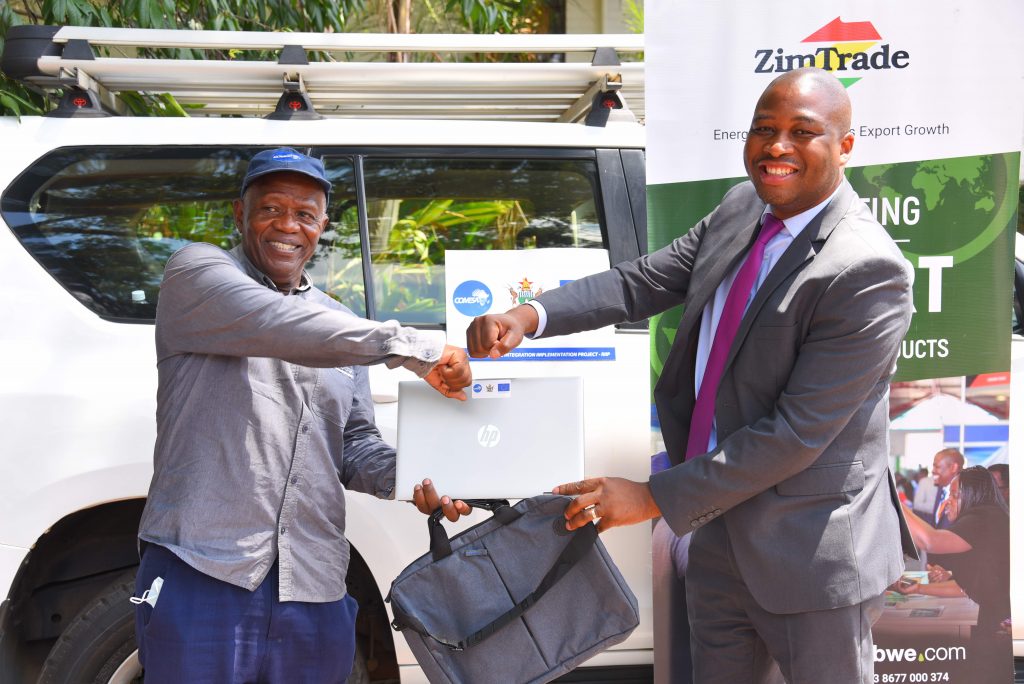
COMESA has supported the Zimbabwe National Trade Development and Promotion Organization (ZimTrade) with over Euro 98,000 worth of equipment, trainings and technical interventions.
The equipment which includes laptops, Tablets, servers and other accessories were handed over to ZimTrade Director of Operations Similo Nkala by the project Manager Mr. Fambaoga Myambo at the COMESA Clearing House offices in Harare on 17th November 2021.
The support will enable ZimTrade, to improve statistics that assist the Zimbabwean business community, to develop, promote and facilitate export of their goods and services to the world. The support comes under the Regional Integration Implementation Programme (RIIP II) under COMESA Adjustment Facility through Regional Integration Support Mechanism funded by the European Union.
Mr Nkala appreciated COMESA stating: “We used to have a lot of challenges in gathering statistics that informs trade decisions by the various sector players, but now this equipment will help us generate accurate and timely statistics for business decisions.”
By working closely with other partners, industry experts and development cooperation partners, Mr Nkala said that ZimTrade provides a comprehensive suite of value-added services that is aimed at enhancing the quality of products and services by the country.
Meanwhile, the Cotton Research Institute based in Kadoma, Zimbabwe has started developing new cotton varieties after a long time. This follows the procurement of a Cotton Fibre High Value Instrument (HVI) at a total cost of Euro 105 000 through the COMESA RIIP I project.
The HVI is a computer aided instrument that tests different fiber quality parameters of cotton. It also informs both cotton seed varieties and the final lint quality produced in the cotton industry.
The head of the research Institute, Mr. Washington Mubvekeri told a monitoring mission by the COMAid team that the support by COMESA helped revive the activities of the institute that had stopped due to poor equipment.
“As we speak now, we have released two new seed varieties on the market and we are expecting to release two more varieties by 2022 and by the year 2024 we should be able to release four more new varieties,” Mr Mubvekeri said.
With the equipment in place, the Research Centre is expected to accommodate more farmers from the current 300,000 to way over 400,000 to use the facility for testing the cotton in the coming year.
The COMAid Coordinator, Mrs Hope Situmbeko, commended the efforts of the institute which she noted, will contribute to the COMESA regional integration objectives, focusing on cotton to clothing value chains.

